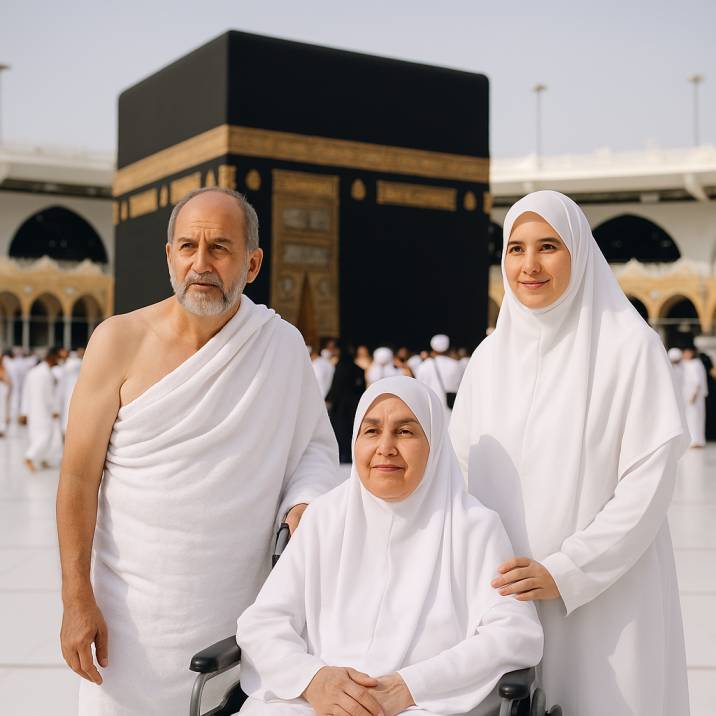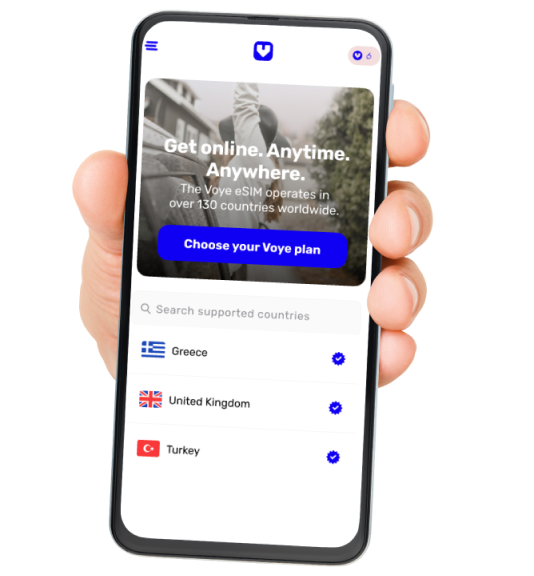Traveling with Family (or Elderly) on Pilgrimage: Hajj Tips for Every Generation

Undertaking the Hajj pilgrimage is a spiritual milestone for Muslims around the world. For many, it’s even more meaningful when experienced as a family. But traveling with children or elderly relatives—especially in the demanding conditions of Hajj—requires careful planning, patience, and attention to physical and emotional well-being.
From managing large crowds and navigating vast sites, to ensuring regular rest for seniors and keeping kids engaged, this guide offers actionable advice to make Hajj a safe, fulfilling journey for pilgrims of all ages.
Keep Your Family Connected During Hajj
Don’t risk getting separated in the crowd. Use Voye Global’s eSIM for instant, secure connectivity across Makkah, Mina, and Arafat.
Why Undertake Hajj as a Family?
For many Muslim families, the opportunity to perform Hajj together is both a spiritual aspiration and a deeply bonding experience. Children grow in appreciation for their faith. Seniors complete a long-awaited goal. And in between, families build lasting memories rooted in worship, gratitude, and collective strength.
Challenges of Performing Hajj with Kids or Elderly Relatives
- Massive crowds and heat
- Long walking distances
- Physically intense rituals
- Fatigue and dehydration
- Difficulty staying together in the crowd
- Navigating group logistics
That said, with strategic planning, these challenges can be managed so the Hajj journey is meaningful for all—not just bearable.
Before You Leave: Smart Preparation
1. Choose the Right Hajj Package
Pick a package that offers:
- Proximity to Masjid Al Haram in Makkah and the Prophet’s Mosque in Madinah
- Air-conditioned buses for transfers
- Separate group guides for elderly pilgrims
- Wheelchair or medical support options
- Tent allocations with shade and accessible restrooms
Tip: Ask your travel agent if they cater to families and if their guides are trained to support children or older adults.
2. Get Medical Checkups for All
Have seniors evaluated for:
- Cardiovascular health
- Diabetes or blood pressure control
- Mobility concerns (arthritis, knee or hip issues)
Discuss the pilgrimage plan with a physician and carry enough medications (plus extra).
Staying Together in the Crowd
1. Use Matching Items or Color Codes
Choose:
- Identical backpacks
- Matching caps or headscarves
- Wristbands or ID cards with name, hotel, and group details
This helps children or seniors be identified and reunited quickly if separated.
2. Location Sharing Apps
Use apps like Google Maps or Life360 to:
- Track family members in real time
- Drop GPS pins for tent locations
- Coordinate group movements via shared locations
Tip: Use a Voye Global eSIM for Saudi Arabia to stay connected with fast, reliable internet during the pilgrimage.
Smart Travel for Every Generation
From wheelchair coordination to child tracking, Voye eSIM keeps your entire family online during Hajj—no roaming, no SIM swap.
Special Care for Elderly Pilgrims
1. Use Wheelchair Services
Wheelchairs are available at Masjid Al Haram and during Tawaf/Sa’i. You can:
- Rent them through official services
- Bring your own (lightweight and collapsible preferred)
- Hire a wheelchair assistant for strenuous parts of the journey
2. Take Frequent Breaks
Plan rest stops every 20–30 minutes if walking long distances. Look for shaded or air-conditioned areas in Mina and Arafat. Hydrate regularly and monitor signs of fatigue or heat exhaustion.
3. Opt for Shorter Ritual Durations
If possible, perform rituals during less crowded times (late night or early morning). Shorter stays in high-traffic areas can significantly reduce strain.
Supporting Children on the Pilgrimage
1. Prepare Them Spiritually and Emotionally
Help kids understand:
- What Hajj means
- The rituals they will witness
- Expected behavior in holy sites
Use illustrated Hajj storybooks or YouTube videos tailored for young Muslims to make it engaging.
2. Bring Familiar Comforts
Pack:
- Snacks and hydration tablets
- Small toys or books
- Travel neck pillows and cooling towels
Children may not complete every ritual, but being present, observing, and walking with the group is part of their Hajj education.
3. Set Realistic Expectations
Let kids rest in the tent during long du’as or night prayers. Focus on involvement rather than perfection. Encouragement over pressure ensures a positive experience.
Make Hajj Meaningful for Everyone
1. Designate Du’as and Moments for Each Other
Encourage each family member to make du’a for others during Tawaf, Sa’i, or standing in Arafat. These shared intentions create unity.
2. Assign Roles
Let older children help guide grandparents or carry supplies. Assign a “du’a leader” each day. These small responsibilities create purpose and participation.
3. Reflect as a Family
End each day with a short circle time in your tent or hotel:
- What was challenging?
- What are we grateful for?
- What did we learn about each other or our faith?
This daily reflection becomes a treasured family ritual in itself.
Stay Connected Without Disruption
Crowds, chaos, and communication breakdowns are common during Hajj. Having stable, fast internet access allows:
- Location sharing in real time
- Contacting your group leader if separated
- Access to health or translation apps
- Checking Hajj updates from official portals
With Voye Global’s Saudi Arabia eSIM, families enjoy:
- Instant activation via QR code
- High-speed coverage across Makkah, Mina, and Arafat
- No physical SIM swap needed
- Multiple flexible prepaid data plans
Stress-Free Pilgrimage Starts with Reliable Internet
Stay connected, informed, and safe on your family’s sacred journey with Voye Global’s high-speed eSIM for Saudi Arabia.
FAQs: Hajj for Families and Elderly Pilgrims
1. Can elderly Muslims perform Hajj with physical limitations?
Yes. With wheelchairs, accessible tents, and tailored group support, many seniors successfully complete Hajj with adjustments to pace and ritual timing.
2. Are children allowed to perform Hajj?
Children can accompany parents to Hajj and receive spiritual benefits, though Hajj becomes obligatory only after reaching maturity. Their participation may be limited based on age.
3. What’s the best way to stay connected with family during Hajj?
Using a travel eSIM like Voye Global’s Saudi eSIM ensures real-time GPS sharing, messaging, and group coordination—even in crowded areas.
4. Can I hire help for pushing wheelchairs?
Yes. Assistants are available at the mosque and through some Hajj packages. Costs vary, and it’s best to arrange in advance if needed daily.
5. How can I prevent losing family members in a crowd?
Use matching accessories, wearable IDs, and mobile tracking apps. Always designate a meeting point at major sites.
6. Is there Wi-Fi in the tents at Mina or Arafat?
Wi-Fi is inconsistent. A prepaid eSIM for Hajj is the most reliable way to stay online during your pilgrimage.








